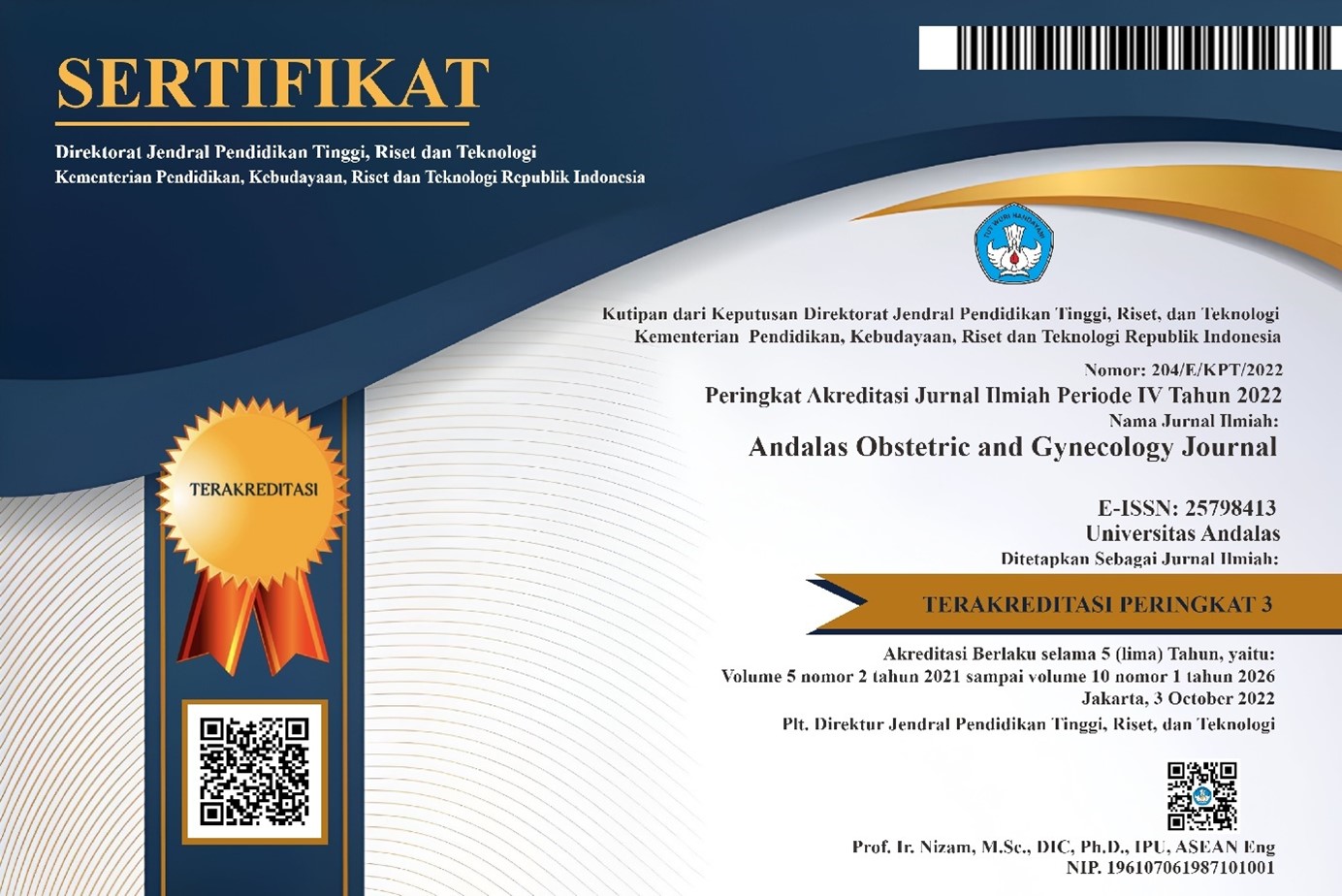Management of Hyperprolactinemia Caused by Pituitary Microadenoma
DOI:
https://doi.org/10.25077/aoj.8.1.642-647.2024Keywords:
Hyperprolactionemia, Pituitary microadenoma, Secondary amenorrheaAbstract
Hyperprolactinemia is an increase in fasting levels of the hormone prolactin above 20 ng/ml in men and above 25 ng/ml in women. Hyperprolactinemia occurs more often in women of reproductive age, with a percentage of 9 – 17%. The etiology of hyperprolactinemia can occur due to abnormal pituitary secretions, systemic disease, use of drugs, damage to the hypothalamus-pituitary axis. A 33-year old female patient came to the FER Polyclinic at M. Djamil Hospital with complaints of not menstruating for the past 2 months. Irregular menstruation since 15 years ago, menstruation 2-3 times in 6 months, irregular cycle for 7-8 days. The patient also complained of a fluid like breast milk coming out of the breast for 5 years, initially the fluid came out in a trickle and then gradually reduced and now the fluid comes out occasionally if the breast is squeezed. From the supporting examinations carried out, it was found that the prolactin hormone level in this patient was 134.53, and the results of the MRI examination showed a mass measuring 1.05x1.12x0.5 mm, which was diagnosed as secondary amenorrhea, hyperprolactinemia, and suspected pituitary microadenoma. The patient will be monitored for general condition and vital signs, as well as consultations with colleagues involved, such as consultations to the Internal Medicine section, Endocrinology, Metabolic and Diabetes Subdivision.
References
Majumdar A, Mangal NS. Hyperprolactinemia. J Hum Reprod Sci. 2013;6(3):168-175.
doi:10.4103/0974-1208.121400
Molitch ME, Drummond J, Korbonits M. A Service of the National Library of Medicine.
MDText.com, Inc; 2012.
Melmed S, Casanueva FF, Hoffman AR, et al. Diagnosis and treatment of hyperprolactinemia: An
endocrine society clinical practice guideline. Journal of Clinical Endocrinology and Metabolism.
;96(2):273-288. doi:10.1210/jc.2010-1692
Wang AT, Mullan RJ, Lane MA, et al. Treatment of hyperprolactinemia: A systematic review and
meta-analysis. Syst Rev. 2012;1(1). doi:10.1186/2046-4053-1-33
Vroonen L, Daly AF, Beckers A. Epidemiology and Management Challenges in Prolactinomas.
Neuroendocrinology. 2019;109(1):20-27. doi:10.1159/000497746ed
Molitch ME. Diagnosis and treatment of pituitary adenomas: A review. JAMA - Journal of the
American Medical Association. 2017;317(5):516-524. doi:10.1001/jama.2016.19699
Downloads
Published
Issue
Section
License
Copyright (c) 2024 Ibnu Muttaqin, Haviz Yuad

This work is licensed under a Creative Commons Attribution 4.0 International License.
Copyright
Authors who publish with this journal agree to the following terms:
- Authors retain the copyright of published articles and grant the journal right of first publication with the work simultaneously licensed under a Creative Commons Attribution 4.0 International License that allows others to share the work with an acknowledgment of the work's authorship and initial publication in this journal.
- Authors are able to enter into separate, additional contractual arrangements for the non-exclusive distribution of the journal's published version of the work (e.g., post it to an institutional repository or publish it in a book), with an acknowledgment of its initial publication in this journal.
- Authors are permitted and encouraged to post their work online (e.g., in institutional repositories or on their website) prior to and during the submission process, as it can lead to productive exchanges, as well as earlier and greater citation of published work (See The Effect of Open Access).
License:
Andalas Obstetrics and Gynecology Journal (AOJ) is published under the terms of the Creative Commons Attribution 4.0 International License. This license permits anyone to copy and redistribute this material in any form or format, compose, modify, and make derivatives of this material for any purpose, including commercial purposes, as long as they credit the author for the original work.







